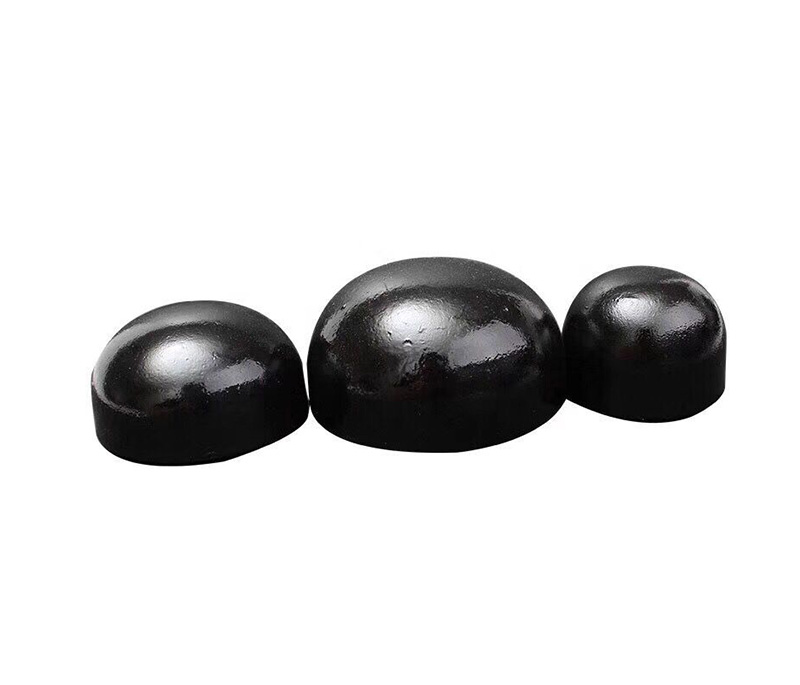Welded pipe caps serve as a crucial component in pipe systems, providing protection and sealing against external elements. In this blog post, we will delve into the world of welded pipe caps, exploring their uses, installation process, and the benefits they offer. Whether you're a professional plumber or a DIY enthusiast, this guide will equip you with the knowledge to ensure the proper protection and longevity of your pipes.

What Is a Welded Pipe Cap?
A welded pipe cap is a type of fitting that is designed to cover the end of a pipe securely. It is welded directly onto the pipe, forming a tight seal and preventing the ingress of dirt, debris, and moisture. Welded pipe caps are commonly made from durable materials such as steel, stainless steel, or carbon steel, ensuring durability and longevity.
Uses of Welded Pipe Caps
Welded pipe caps find applications in various industries and pipe systems. Here are some common uses:
Protection: Welded pipe caps are primarily used to protect the open ends of pipes from external elements, including dust, dirt, and moisture. This ensures the integrity and longevity of the pipes, preventing corrosion and damage.
Safety: In industrial environments, welded pipe caps provide safety by covering the exposed ends of pipes. This helps prevent accidents, such as injuries caused by sharp edges or accidental contact with hazardous substances.
Aesthetics: Welded pipe caps also contribute to the overall aesthetics of pipe systems. They provide a clean and finished appearance by concealing the open ends of pipes, enhancing the visual appeal of the installation.
Installation Process
Installing a welded pipe cap requires careful attention to ensure a proper and secure fit. Follow these steps for a successful installation:
Prepare the Pipe: Ensure that the pipe end is clean and free from any debris or irregularities. Smooth out any rough edges using a file or sandpaper.
Apply Welding Preparations: Clean the welding area of the pipe cap and the pipe itself to remove any contaminants. Proper cleaning promotes a strong and secure weld.
Weld the Pipe Cap: Position the pipe cap over the pipe end and align it properly. Use appropriate welding techniques and equipment to create a strong and durable weld between the cap and the pipe.
Inspect and Test: After welding, inspect the weld for any defects or irregularities. Conduct a pressure test, if applicable, to ensure the integrity and reliability of the installed welded pipe cap.
Benefits of Welded Pipe Caps
Welded pipe caps offer several advantages that make them a preferred choice in pipe installations:
Protection and Sealing: Welded pipe caps provide reliable protection against external elements, ensuring the longevity and performance of the pipe system. They form a tight seal, preventing the ingress of dirt, moisture, and other contaminants.
Durability: Made from high-quality materials, welded pipe caps are built to last. They are resistant to corrosion, impact, and extreme temperatures, ensuring long-term protection and minimal maintenance requirements.
Safety Compliance: Welded pipe caps help meet safety standards and regulations by covering exposed pipe ends, minimizing the risk of accidents and injuries.
FAQs
1. Can welded pipe caps be removed after installation?
Yes, welded pipe caps can be removed if necessary. However, the process may require cutting and welding new caps in place.
2. What are some common materials used for welded pipe caps?
Common materials for welded pipe caps include steel, stainless steel, and carbon steel. The material choice depends on factors such as the application, environmental conditions, and desired durability.
3. Can welded pipe caps be used for both residential and industrial pipe systems?
Yes, welded pipe caps are suitable for both residential and industrial pipe systems. They provide protection, sealing, and aesthetics in a wide range of applications.
Conclusion
Welded pipe caps play a crucial role in protecting and sealing pipe ends, ensuring the longevity and integrity of pipe systems. Their installation process requires attention to detail and adherence to proper welding techniques. By utilizing high-quality welded pipe caps, you can enhance the durability, safety, and performance of your pipes. Choose reliable fittings and follow the recommended installation procedures for optimal results.
Get reliable welded pipe caps for your pipe systems and ensure long-lasting protection today!





Comments
All Comments ( 0 )